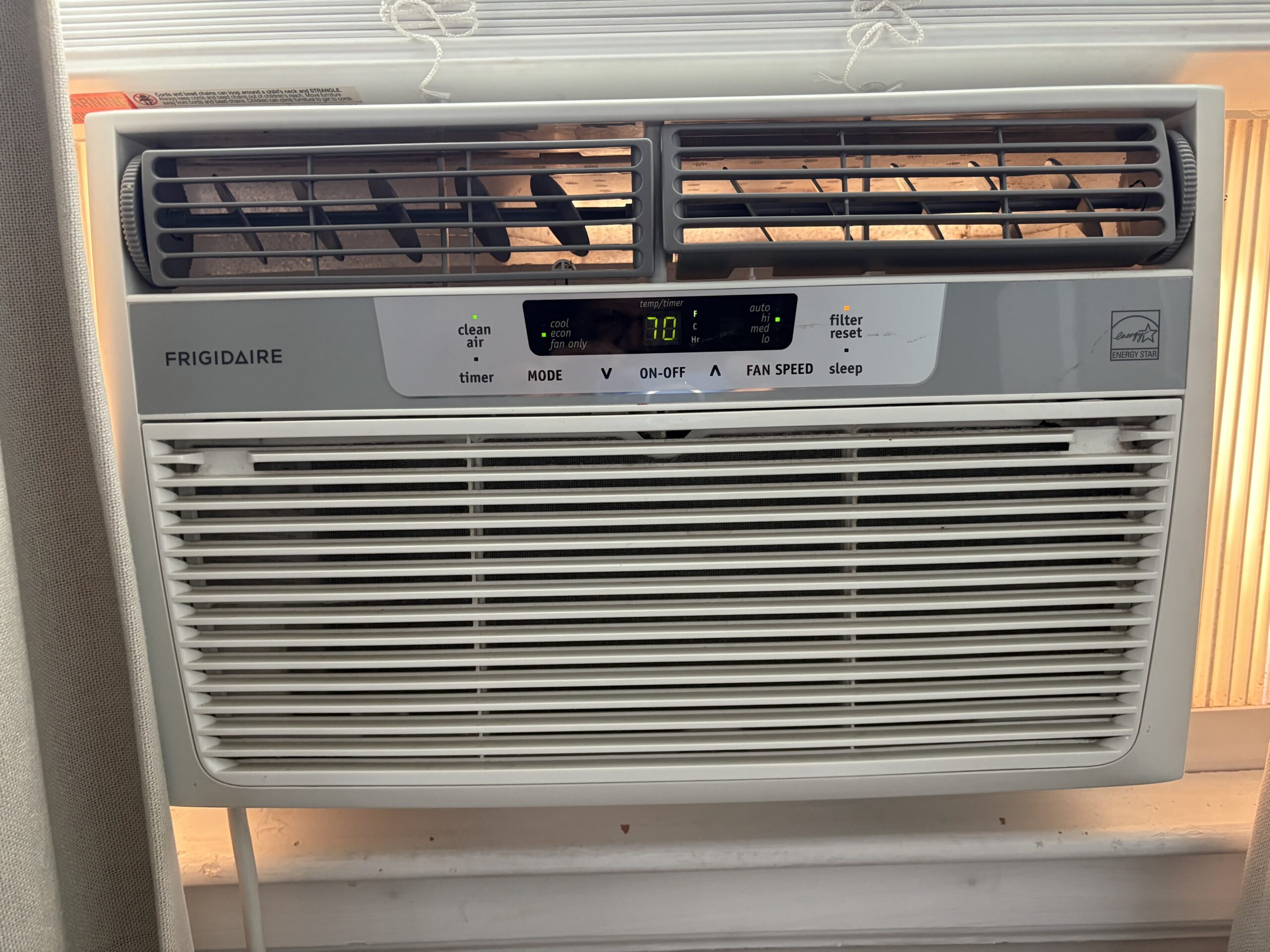Consumer Diary: Groceries, Moldy AC

Audio By Carbonatix

This one of four window AC units full of mold. Photo credit: Harlan Levy
Consumer columnist and West Hartford resident Harlan Levy has more than 20 years of experience writing stories about everyday experiences that anyone could encounter.

Harlan Levy. Courtesy photo
By Harlan Levy
Before turning to my main topic I want to give you the latest prices on Canadian tomatoes and Mexican avocados, supposedly burdened with significant Trump tariffs. But, surprisingly, at our four main grocery stores the prices of Canadian tomatoes and Mexican avocados haven’t risen and are strangely lower at one supermarket:
- Big Y: Tomatoes: $2.99. Avocados: 2/$3
- Trader Joe’s: Tomatoes: $2.99. Avocados: $2.99. Avocados: 4/$4.99
- Whole Foods: Tomatoes: $3.69. Avocados: $3.49
- Stop & Shop: Tomatoes: $1.88/lb. Avocados: $0.77 (Wow!)

At Trader Joe’s, Canadian tomatoes – not Beefsteaks – go for $2.99 each this week. Photo credit: Harlan Levy
Mold
Last week we went to a very close friend’s home over their vacation to water their plants and check the insides. Inside we smelled an alarming musty odor. We looked into the window air conditioning units and actually saw a heap of mold in each one in their bedroom, their two daughters’ units, and the living room/kitchen unit. That was alarming, because all four of them have been sick with respiratory problems recently, especially this summer when the AC has been on all day and night.
Alarmed, we called an AC guy, who came over and confirmed that the units were blowing substantial amounts of contaminated moldy air. We then resolved to tell them to get rid of the units and buy a central AC system or four new window AC units, with their family at risk. A new central AC system would cost about $45,000 from one company although another company we consulted quoted $25,000. New window units, on sale on Amazon, would cost about $300-$400.
Meanwhile I researched mold in AC units and found extensive details from Qualityhomeaircare.com as follows. Please take heed, readers.
Mold thrives in moist, dark environments, which are conditions commonly found inside air conditioning systems. When moisture accumulates, especially during humid American summers, spores can settle and multiply rapidly. Several factors increase the likelihood of mold in AC units:
- Poor Drainage: Blocked or slow condensate drain lines let water collect in the drip pan or coils.
- High Indoor Humidity: Excess moisture in the air contributes to mold growth.
- Infrequent Maintenance: Skipping routine AC servicing allows dirt, dust, and moisture to linger in critical parts.
- Dirty Filters: Clogged filters reduce airflow and trap organic debris, which serves as food for mold.
- Poor Ventilation: Inadequate airflow prevents the unit from drying out between cycles.
Signs:
- Unusual Odors, visible mold: A persistent musty or earthy smell, especially when the unit cycles on, suggests fungal growth. Also, find dark spots, fuzzy patches, or greenish/black/white growth inside air vents or along registers.
- Allergy and Asthma Symptoms including increased sneezing, coughing, watery eyes, sneezing, itching, headaches, runny nose, asthma attacks when using the AC.
- Hypersensitivity Pneumonitis: A rare but serious lung inflammation.
- Chronic Health Issues: Fatigue, dizziness, brain fog with prolonged exposure.
- Decreased Air Quality: Stale or stuffy indoor air that doesn’t improve even with routine cleaning.
- System Performance Issues: The AC struggles to cool, making odd noises or turning on and off frequently (short cycling).
Types and what to do
Several types of mold can colonize air conditioning systems. The most prevalent in U.S. homes include:
- Cladosporium: Appears dark green or black, often found on fiberglass ducts or inside units.
- Penicillium: Blue or green mold that spreads quickly on damp insulation or filters.
- Aspergillus: Yellow-green in color, commonly implicated in causing allergic responses.
- Stachybotrys (Black Mold): Less common but highly toxic, known as “toxic black mold.” Typically slimy, dark green or black.
Not all molds are equally dangerous, but any visible growth requires swift action to prevent health issues and system damage.
- Do not disturb heavy mold growth as spores may become airborne. Call a certified professional if widespread contamination is found.
- Change filters every 1-3 months, especially during peak use.
- Schedule professional cleaning and inspections at least once a year.
Now you know.
NOTE: If you have a consumer problem, contact me at [email protected] (“Consumer” in subject line), and, with the power of the press, maybe I can help.
Like what you see here? Click here to subscribe to We-Ha’s newsletter so you’ll always be in the know about what’s happening in West Hartford! Click the blue button below to become a supporter of We-Ha.com and our efforts to continue producing quality journalism.




Interesting article. Anyway to clean window units?